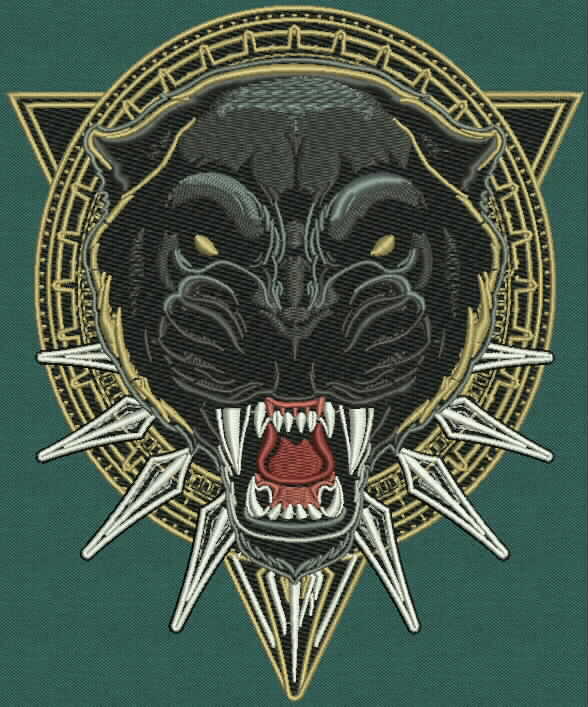Efficient Digitizing for Embroidery: Quick Turn-around
Wiki Article
Simplifying the Art of Needlework Digitizing: Step-by-Step Guide
As technology proceeds to breakthrough, the digitization process has actually become extra obtainable, permitting lovers to bring their intricate layouts to life with ease. In this guide, we will untangle the complexities of needlework digitizing, breaking down each action carefully to enhance the procedure and equip both beginners and experienced embroiderers alike.Understanding Embroidery Digitizing Software
Needlework digitizing software serves as an essential device for changing intricate layouts right into electronic formats suitable with embroidery equipments, helping with accurate sewing and personalization. This specific software permits customers to import different picture documents styles, such as JPG or PNG, and transform them right into embroidery machine-readable layouts like DST, EXP, or PES - Digitizing for Embroidery. By making use of attributes like stitch editing and enhancing, padding choices, and thread shade choice, digitizing software program makes it possible for customers to control every aspect of the style procedureMoreover, progressed embroidery digitizing software application uses tools for creating intricate styles, adjusting stitch density, and incorporating complex information. Customers can additionally sneak peek the design prior to stitching it out, guaranteeing precision and minimizing errors. Furthermore, lots of software application provide automated attributes that help simplify the digitizing procedure, saving effort and time.
Understanding the abilities of embroidery digitizing software is vital for achieving top notch cause embroidery projects. By understanding this tool, embroidery fanatics and professionals can release their creative thinking and bring complex layouts to life with precision and efficiency.

Choosing the Right Layout Data
After acquainting on your own with the capacities of embroidery digitizing software program, the following critical action in the procedure is choosing the best design apply for your project. Digitizing for Embroidery. When selecting a style data for needlework digitizing, it's important to consider the intricacy of the design, the dimension of the last item, and the kind of fabric you will certainly be dealing withFor intricate layouts with great information, a high-resolution picture or vector documents is advised to guarantee that the needlework maker can precisely replicate the style. Furthermore, the size of the final product plays a significant role in picking the best layout file. Bigger designs might need higher resolution data to keep clearness and sharpness.
In addition, the sort of fabric you will be stitching on affects the selection of style data. Different fabrics may require changes in the layout file to make certain that the stitches are correctly aligned and the layout looks like planned. By carefully selecting the right layout data based on these elements, you can set yourself up for a successful needlework digitizing process.
Digitizing Tools and Strategies
Making use of specialized software application and accuracy techniques, digitizing devices are crucial in transforming intricate styles into embroidery-ready data. Needlework digitizing software program, such as Wilcom, Hatch, or Embrilliance, gives the necessary platform to transform artwork right into stitch information. These programs provide functions like stitch editing, padding alternatives, and text tools to make certain the design translates flawlessly onto material.One of the key techniques in digitizing is producing a clear path for the embroidery machine to follow. This entails digitizing each component of the layout with precision, establishing stitch kinds, thickness, and directions. By utilizing tools like digitizing tablet computers or software-specific plugins, embroiderers can accomplish a high level of accuracy in their digitized styles.
Additionally, mastering the art of rug sewing is essential for generating quality embroidery. Underlay stitching maintains the textile and produces a foundation for the design, guaranteeing that the end product is both visually enticing and lasting. By comprehending these digitizing devices and methods, embroiderers can elevate their craft and bring complex styles to life with precision and efficiency.
Customizing Stitch Kinds and Directions
Having actually established a foundation in digitizing devices and methods, a crucial aspect beforehand embroidery craftsmanship exists in tailoring stitch types and instructions with precision and purpose. The selection of stitch kinds can dramatically affect the overall look and texture of the embroidered layout. Satin stitches, known for their smooth and shiny surface, job well visit their website for developing boundaries and text. On the other hand, fill stitches are optimal for covering larger locations efficiently. By tactically combining these stitch types, embroiderers can achieve depth and measurement in their designs.Moreover, the direction of stitches plays a critical duty in improving the visual charm of the last needlework. By experimenting with various stitch angles and patterns, embroiderers can bring their styles to life with impressive information and details.
Screening and Refining Your Digitized Design
To guarantee the precision and quality of your digitized design, comprehensive screening and improvement are essential action in the embroidery digitizing process. When you have completed the digitization of your layout, it is essential to test it before continuing with the real embroidery. Evaluating allows you to recognize any kind of prospective concerns such as string breaks, sew density problems, or design distortions that may affect the last result.
After testing, it is very important to fine-tune your digitized layout based on the comments from the examination sew-out. This may entail tweaking stitch setups, readjusting densities, or making modifications to the total design to achieve the Our site preferred result. By repeating through screening and refinement, you can adjust your digitized style to excellence prior to relocating onward with the actual embroidery procedure.
Verdict
In final thought, grasping the art of embroidery digitizing needs a comprehensive understanding of the software program, picking the right style data, making use of digitizing devices and strategies, customizing stitch go to the website types and directions, and screening and improving the digitized style. By following these actions, embroiderers can simplify the digitizing process and produce high-quality embroidered designs with precision and efficiency.Report this wiki page